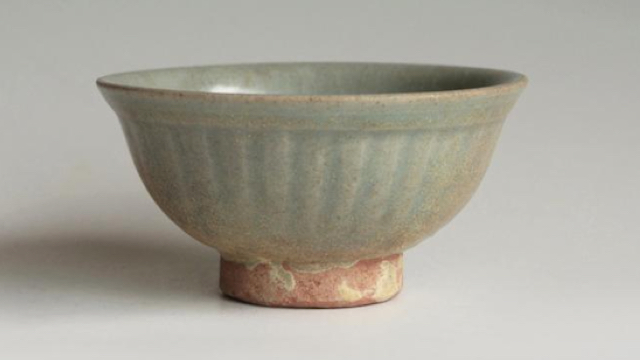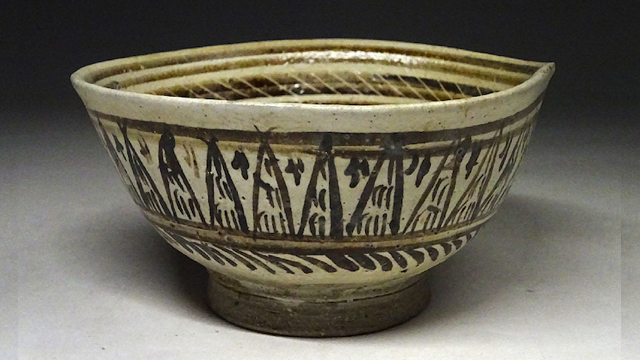
It is said to the pottery made around Sawankhalok in Sukhothai, Thailand. The word ``Sung Koroku'' itself is a transliteration of ``Sawankhalok'', the place of production.
It used to refer to unglazed pottery with white pear-skin finish and a few decorations painted on iron, but the meaning was later expanded to include all pottery produced in Thailand.
Historically, around the 13th century, King Ramkhamhaeng the Great summoned potters from China and succeeded in producing pottery.
Around the 14th and 15th centuries, it was frequently made for export and brought to Japan by Chinese merchants. In Japan, it was used as a tea utensil and attracted attention from the Warring States period when the tea ceremony began to spread, and was widely used by tea masters in the Edo period.

Celadon is porcelain or stoneware with a celadon glaze. It is a translucent bluish-green porcelain that is said to have originated in China around the 14th century BC.

A technique of drawing patterns with a brush using pigments containing iron. Iron-containing pigments are produced in a wide area, so they are easy to obtain, and are called oniita, mizuuchi, and other names. In China, it began with the creation of porcelain and was widely practiced as the most universal painting technique.